In 1939, the United States was the global leader in railway electrification, with over 20 percent of the world’s total. Today, electrification is a non-factor on almost all American railroads outside the Northeast Corridor. How did this happen? TRAINS Magazine brings you the story of America’s rise and fall as an electrification leader, and examines how new technologies and converging forces might jumpstart a new era of railway electrification across the United States. Will overhead wires come to a main line near you? Pick up the November 2009 issue and find out what it will take!
Before you look to the future, however, it’s essential to understand the past. When it came to electrifying America’s railway, five distinct movements were the main technology drivers. Here’s a brief summary of each.
Many early railroad electrifications took place in long tunnels, driven by congestion and pollution. The first-ever installation of electric traction on a mainline steam railroad occurred in 1895 inside the Baltimore & Ohio’s Howard Street Tunnel in Baltimore. Other installations soon followed, such as the St. Clair Tunnel on the Grand Trunk (completed in 1908), the Cascade Tunnel on the Great Northern (1909), the Detroit River Tunnel on the Michigan Central (1910), and the Hoosac Tunnel on the Boston & Maine (1911). While all five of these tunnel electrifications proved immensely successful in the steam era, they all ended when their roads dieselized. Hoosac Tunnel on the B&M, an early adopter of diesel power, was the first to go in 1946. The others followed over the next dozen years, with St. Clair Tunnel on steam-holdout Grand Trunk Western being the last to de-energize, in 1958.
Mountains
Tunnel electrifications paved the way for larger projects, and soon a few lines tried much longer installations, including the coal-hauling Virginian Railway and the Chicago, Milwaukee, St. Paul & Pacific.
Both the Virginian and the Milwaukee Road electrified their steepest mountain districts, where electrics held the greatest advantage over steam. The Virginian’s 134 miles of electrification, completed in 1925, included 14 arduous miles of 2 percent grade against loaded coal trains out of Mullens, W.Va. Taking a 5,500-ton coal train to the summit was a two-and-a-half- hour slog with a 2-8-8-2 road engine and two 2-10-10-2 pushers. Electric operation was an immediate success, as two 3-unit box-cab electrics whisked 6,050-ton coal trains to the summit in a single hour.
Ten years earlier, electric power similarly proved superior to steam in nearly every way when the Milwaukee Road energized 113 miles of its steep main line through western Montana. By fall 1919, the installation had grown to encompass two separate districts, a 438-mile division in the Rockies and a 207-mile district across Washington’s Cascade Mountains. Great Northern did the same for its route in the Cascades, running electrics through the Cascade Tunnel, the longest tunnel in North America at the time.
What killed the Virginian’s electrification was the line’s 1959 merger with the Norfolk & Western. The N&W was a much larger system and the Virginian’s 134 electrified miles were suddenly a much smaller portion of a larger whole, as well as an operating anomaly requiring specialized equipment that was confined to a limited area. The wires came down in 1962. (Ironically, N&W had electrified its own route through the Appalachians even before the Virginian, then forsook electricity for a diesel-powered line relocation.)
The situation on the Milwaukee Road was far more complex. Cash-strapped for much of its existence, the Milwaukee never made the major upgrades that would have been necessary to modernize its electrification, which had become quite outdated by the 1970s. The railroad’s directors had set their sites on merging with another railroad, and deferred maintenance across the system. In addition, the costs of maintaining separate locomotive fleets and servicing facilities for electric and diesel power became too much to justify. The wires came down in the 1970s, almost inexplicably during a global energy crisis that made diesels twice as expensive to operate.
Passenger terminals
Electrification expert William D. Middleton reports that in 1913, Pennsylvania Railroad’s Broad Street Station in Philadelphia was handling 500 daily trains. Even more remarkable was the fact that with terminal switching moves, each train required an average of eight movements through the interlocking plant, leading to a staggering 4,000 daily movements, nearly three every minute. Electrifying two of the busiest routes in 1913-1915 relieved much of the congestion, and it should be noted that unlike earlier projects, the PRR utilized A.C. in Philadelphia, which could easily be integrated into a larger system. The project was an immediate success. Electric multiple-unit trains, which could easily operate in both directions, eliminated the switching moves required by steam-hauled consists, while the trains’ faster acceleration cut the running time on 20-mile routes by as much as seven minutes.
Other railroads also electrified congested terminals and busy commuter lines, including the Reading Railroad in Philadelphia, New York’s Long Island Rail Road to Penn Station, the New York Central and New Haven commuter operations serving Grand Central Terminal, Illinois Central’s Chicago-area commuter service, and the Lackawanna’s commuter lines out of Hoboken Terminal.
Short lines
A handful of short lines have electrified most or all of their systems. By and large, these installations have proved successful. Black Mesa & Lake Powell, an isolated coal-hauler in northeast Arizona, is the poster child for this. The 78-mile railroad is well into its fourth decade of operating and has been entirely electric from its outset, using power from the generating station for which it hauls coal, rather than trucking millions of gallons of diesel fuel for hundreds of miles. Other coal-hauling railroads exist in Utah (Deseret-Western), Texas (TXU), and New Mexico (Navajo). Ohio’s Muskingum Electric, a well-known eastern example, ran two 12-car trains between a mine and a power plant from 1968 to 2002. The mine’s closing ended the operation.
All of these lines owe a tip of the hat to the pioneer for this type of railroading: Montana’s Butte, Anaconda & Pacific. Its electrification in 1913 helped foster the Milwaukee Road’s subsequent installation. For more than half a century, BA&P operated a busy 26-mile electrified main line, hauling more than a dozen daily trains of copper ore. Only when a new smelter opened in Butte, eliminating the vast majority of the road’s traffic, did electric operations cease.
Policy decisions by local governments prompted several electric installations that have lasted to this day. The precedent was set by New York City, which in 1903 passed a law that essentially forced the New York Central and New Haven railroads to electrify their commuter lines serving New York by banning the use of steam locomotives south of the Harlem River after mid-1908. The decision followed a deadly 1902 train accident that occurred on the smoky, tunneled approach to Grand Central Terminal. Chicago passed a similar ordinance, forcing Illinois Central to electrify its busy lakefront commuter line by 1927. Smoke-abatement reasons prompted the construction of electrified approaches to Cleveland Union Terminal that lasted from 1930 to 1953.





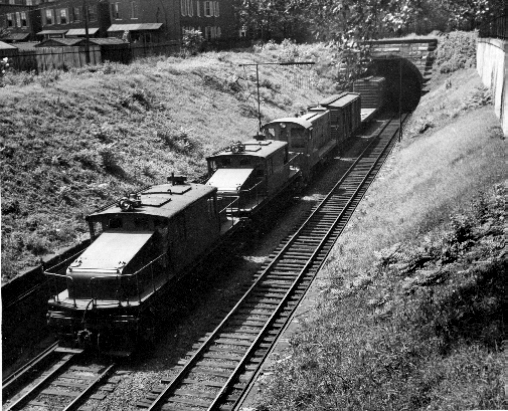
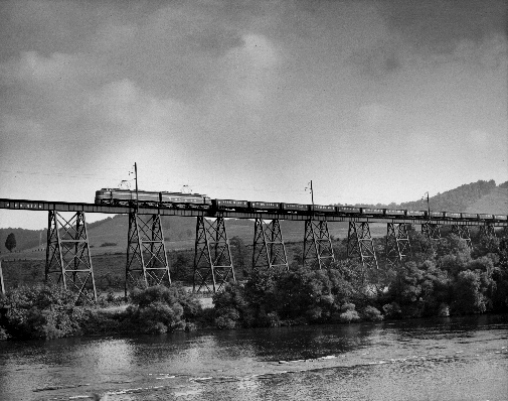
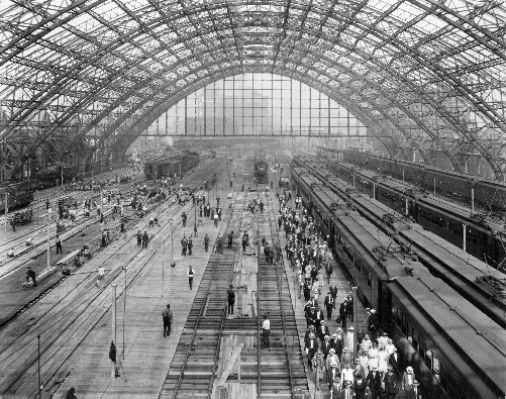
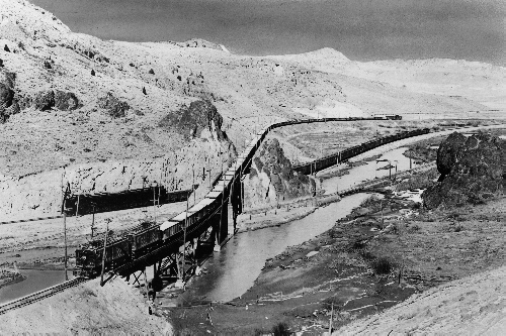
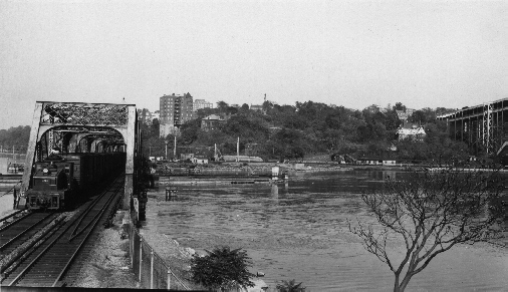




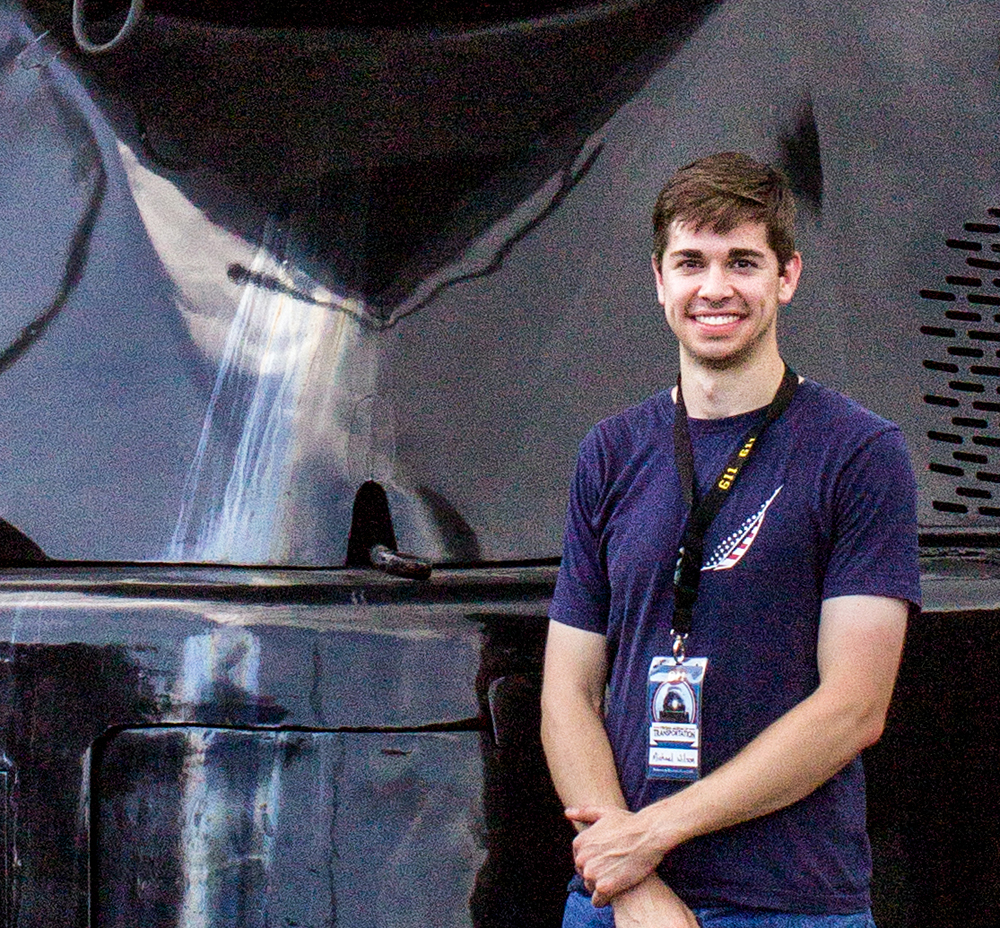




Too bad the considerable influence of US electric traction engineering in the world couldn’t be mentioned. In Europe there were until 1998 the Dutch and Spanish direct descendants of the PRR Westinghouse Rectifying locomotives and researching post WWII US electric traction manufacturing I’m only now discovering such GE and Westinghouse descendants in Chile, Brazil and Argentina.
I’m surprised that the Iowa Traction is not included in this article. It is still operating with trolley pole power.